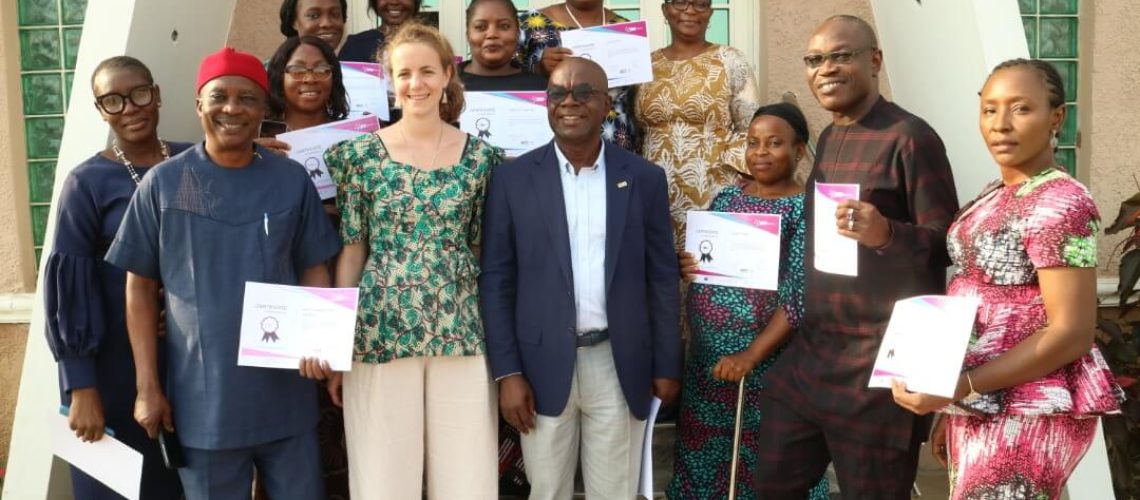2019, Nigeria – Training on gender equality and disability inclusion in vocational education and training (Part 1/2)
What is inclusion really about? Practically speaking, how do we make it happen? These questions were behind the BEST Centre motivation to know more about gender equality and disability inclusion.
This article is part of a series. This is article 1 out of 2.
The Abuja Chambre of Commerce and Industry (ACCI) has established a vocational education and training (VET) Centre. It is called the Business, Entrepreneurship Skills and Technology (BEST) Centre. It runs trainings to improve the business capacities of entrepreneurs and companies.
The BEST Centre realised that it has fewer women enrolled in its programmes than men, and even fewer persons with disabilities. That is why it contacted the VET Toolbox. This is a programme bringing together national development agencies to promote demand-driven and inclusive VET. Through it, the BEST Centre received technical support to strengthen the inclusion of vulnerable groups in VET. That is where Consultant Nadège came into the picture.
Nadège designed and facilitated a training to enable the BEST Centre staff capacities in gender equality and disability inclusion. The training objectives were to:
- Raise awareness on the needs and rights of girls, women and persons with disabilities
- Better understand how to create an inclusive study environment as well as a health and safe VET centre.
Training agenda
Day 1 was about acquiring the basics concepts of equality, equity and inclusion. Participants learnt about the difference between sex and gender, and what gender identity is about. It also learnt how impairment is different from disability.
During Day 2, the participants went through the most usual barriers challenging female learners and learners with disabilities. They reviewed how both environmental and attitudinal barriers impact learners with mixed gender and abilities.
The 3rd and last day focused on preparing future actions. Trainers developed an individual education plan for a student with disabilities, while administration and logistics staffs drafted an anti-sexual harassment policy. On their side, Board members and partners created advocacy messages. Everyone had something to start from and implement actions, after the training was over.
Day 1
The basic concept of inclusion
- Equality versys equity
- Gender identity
- Impairment and disability
Day 2
Barriers hampering access
- Environmental barriers being it physical, information and communication or digital
- Attitudinal barriers: discrimination, abuses and violence
Day 3
Taking actions
- Identifying support services and community organisations
- Drafting tools for future implementation
To ground knowledge and acquire know how, the participants went through various activities:
- Group sharing about their experiences of discrimination for instance
- Reviewing checklists of physical barriers to access VET Centres and their activities
- Listening to a pretty much top-down presentation about international and Nigerian legislation
This training was participatory and action oriented in nature. To the extent that a participant reported that he “had no choice but getting involved here”!
More about the BEST Centre Gender and Disability Inclusion Programme
